Peak stuff. Minimalism. De-cluttering. The life-changing magic of tidying up. Our cultural keywords of the moment seem to suggest the appearance of something in the current zeitgeist that has us obsessed with thinking about all the stuff we have and why we have it.
I have been slowly sifting my way through Marie Kondo’s The Life-Changing Magic of Tidying Up. I am not surprised by all the testimonials that claim following her method of purge and put-away has resulted in miraculous life-changing events: divorce, weight loss, the achievement of a goal once thought impossible. Getting rid of things we no longer need helps us to also purge the emotional baggage that becomes tied to physical possessions. I agree with her principle that it is possible to live a life that is not weighted down by the possession of too much stuff, especially when those things are collecting dust or rotting away in storage. Though I find her obsession with tidying borderline OCD (she obviously does not have kids), I think in principle she is right – most of us keep objects lying around for not very good reasons.
However, despite the points of agreement, something fundamental remains unaddressed by the best-selling piece of advice and others have already said it:
“But the de-cluttering industry can’t deal with the broader aspect of why we feel so out of control in our own homes. After all, we have merely done as we were told: consumed. Now, it has become excessive, and we are swimming in our own tat. Is this elevation of tidying enough to stop the circle of shopping, of built-in obsolescence, of fashion, of our complete lack of connection to where any of our products come from?”
We have been following the church of consumerism dogmatically for so long that most of us have trouble putting our finger on what the real attraction is to books like The Life Changing Magic of Tidying Up. We have too much stuff because we BUY too much stuff – and cheaply made stuff that falls apart too easily at that. We have difficulty throwing it out because if we throw it out, the church of stuff might lose its significance. What was the purpose of collecting all these things if I don’t even really need them?
There isn’t any purpose. Most of the garbage we buy that ends up stocking shelves in landfills was never necessary. And that is the cultural anxiety that is putting Kondo’s book in the limelight, making IKEA boss’s ‘Peak Stuff’ statement go viral and elevating movements like Minimalism to the forefront of fashion and design. The church of consumerism is beginning to lose its grip – all the meaning imbued in objects from advertisements eventually fades away, leaving us to survey our empires of junk feeling empty despite the overflowing drawers and bursting closets.
So all this musing to say, I think the “KonMari” method, as she calls it, is sorely lacking in a philosophy to live by that will help the Western world ease itself out of the old way of looking at stuff and into a new one that respects the objects, the environment and our human family simultaneously. We need to de-clutter the planet, not just our homes.
Here’s 5 other ways to de-clutter that are actually going to change the world we live in.
1) Use Sharing Centers
We really need to start thinking about what as a society we can own collectively and which things we truly need access to on a daily basis. We need to re-train our brains to think about things in terms of access rather than ownership. That camping gear you and all the other people in your building used twice last year – do you all need to have individual tents and sleeping bags sitting in storage? Or could you go to a sharing center that houses such items you need occasionally, use it for the time you need and then put it back for someone else to use? This is why we have just launched a crowdfunding campaign to start up Toronto’s first Library of Things, The Sharing Depot! Check out the campaign and donate if you want to see Toronto share more than just tools!
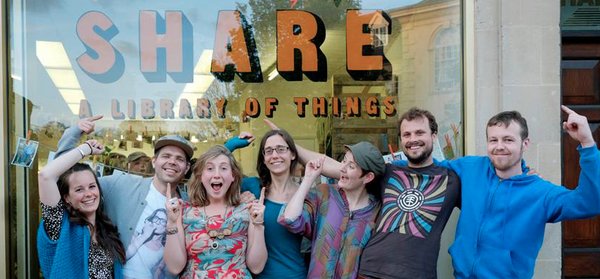
There are many items I can think of that I would prefer to share with my community than have lying around – board games, party supplies, Halloween costumes, children’s toys, camera gear, sports equipment, even certain kinds of clothing. All the energy and resources that go into making and shipping these things we think we need so badly could be vastly reduced if we shared them instead. I imagine the future development of high rise buildings and condos will incorporate such sharing centers into their design and that many shops on street corners will be transformed into ‘Libraries of Things.’
2) Swap Till You Drop
I am so proud to say that Toronto has a strong swapping culture developing. The Toronto Tool Library has held several successful gift and toy swaps, while Bunz Trading Zone has made it into the news several times recently and has nearly 29,000 members.
Swapping is amazing for two reasons: using your things as currency is a way to recycle un-wanted items back into the world while getting items in return that you are in need of without spending any money. And more importantly, it builds community. When you join Bunz Trading Zone, for example, you get way more than access to a bunch of stuff available for trade. You become a member of a group where people genuinely care about helping others. A recent post that showed up in my Facebook news feed demonstrates the level of awesomeness I’m talking about:
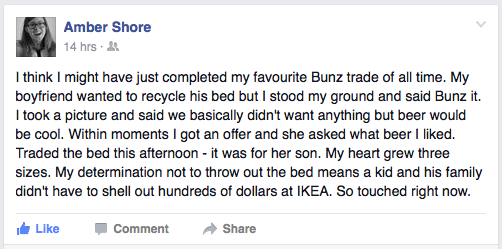
Trading and swapping restores an element of humanity to our communities that venture Capitalism stole when it decided profit should be the god we all sacrifice our lives for.
3) Buy Quality, Not Quantity
Another trend I’m extremely excited about – buying quality made products that are produced ethically with the purpose of holding onto them for a long time. There’s a different thought process involved in this kind of shopping that I find way more enjoyable than going into H&M and purchasing an entire new wardrobe just because everything is disgustingly cheap. Items that are well-made are more expensive so you think longer about which things you are going to let into your life.
You also know that your purchase is supporting the individual (or group of individuals) who are making the product. One of the things that Capitalism has mastered is severing the connection between the item we are purchasing and how it got to the store. The materials used, how the materials were extracted from the earth, the person/people who forged the material into its new form, etc. – all these are issues people are beginning to care about again.
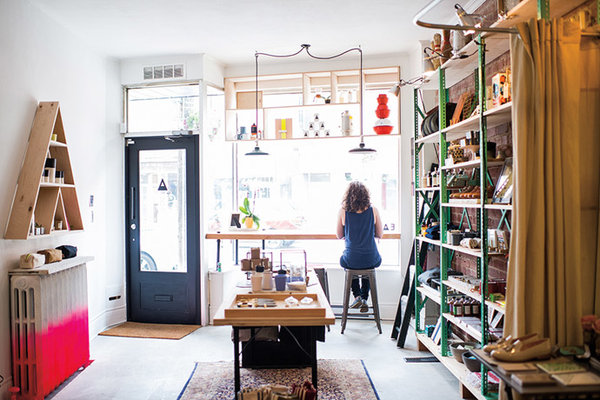
This movement is gaining ground with blogs and websites popping up like Buy Me Once, a product-review site dedicated to showcasing products that are made well and built to last:
“I wanted all these quality products to be in one place, so that people interested in creating less waste and saving money in the long run, could find products that would really last.”
Buying things with the intention to keep them around for a long time reduces the number of things you need to buy and means you’re tossing less into your junk drawer.
4) Know Thyself
So often we go into the consumer-driven wonderland to find that our needs and desires are pulled this way and that, our wants are swayed by sensationalized and tempting images of happy people doing exiting things with all this shiny stuff. It’s easy to come home and find you’ve purchased something that actually doesn’t suit you or your taste at all.

It’s important to know what you really want before you make the decision to purchase. My strategy is twofold: first I use Pinterest boards to keep track of things I’ve seen on blogs and Instagram that ‘spark a sense of joy’ in me, to use Marie Kondo’s phrase. In a sense, I craft my style and wants virtually before I try to materialize them. This way, when I’m in thrift stores and searching for maker-made items, the things I really love stand out right away and I’m less distracted by everything else. My second strategy is to bookmark items online that I think I want and wait several months before I actually purchase. Often the desire fades away and I don’t end up purchasing the item at all.
5) Use Local Repair Centers
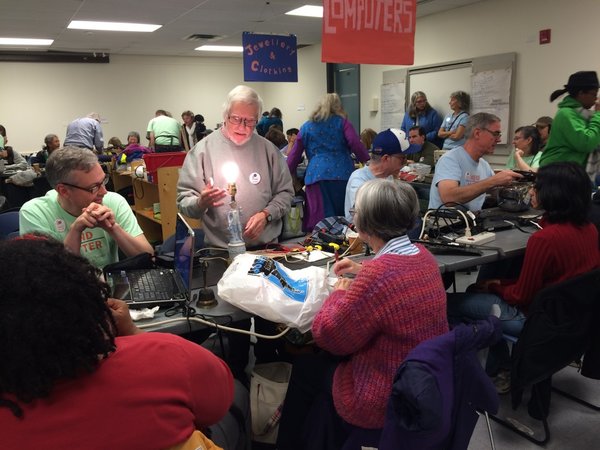
Fortunately for the planet, the repair movement is really taking off. If you aren’t confident enough yet to DIY your own repairs, Toronto has an amazing Repair Cafe where expert volunteers help you fix everything for free: clothing, books, electronics, small appliances, bicycles, furniture, etc. If something breaks, don’t leave it around the house because you feel guilty about throwing it out but don’t know how to fix it yourself, find somewhere to take it where it can be restored to good working order.
The other thing you can do is look for and support products that have repair-ability built into their design or at least use materials that are easily re-used. These products are not everywhere yet, but as the Circular Economy gains ground, they will be (you can now take an online course on the circular economy). Check out Steel Case’s Think Chair, which uses 95% recyclable materials and Fairphone and Phonebloks, companies trying to create ethical smartphones.
Top Photo Source: One Dollar Photo Club
Source: Toronto Tool Library
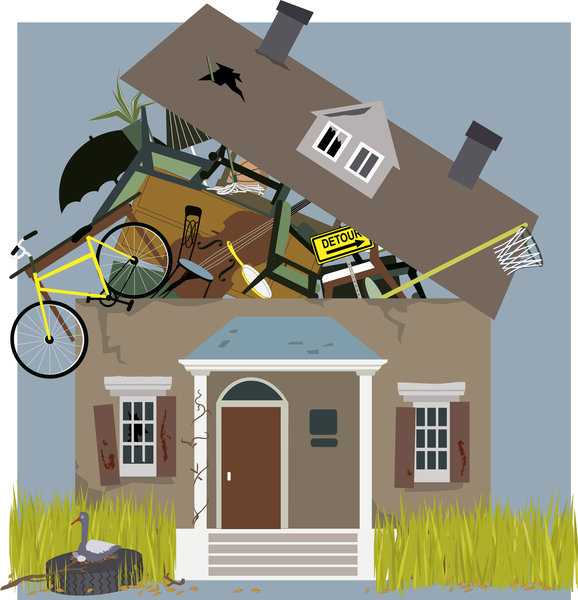
I really like these ideas, even the repair place if you have it fixed you could still donate the item to someone who has a need, less stuff in the landfills. Great Post!
Yes! We agree. It’s a concrete idea of what communities can create as a resource center and place to send items, like you said, diverting them from going to a landfill. Thank you for your comment.